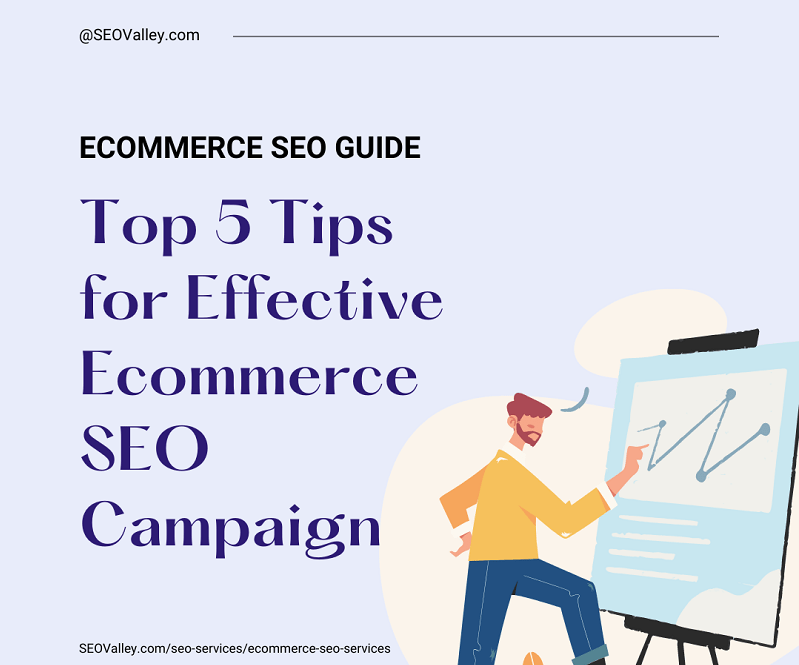The success of an eCommerce store relies heavily on search engine optimization. Before you can successfully sell products or services online, you need to boost your website’s visibility so that potential customers can find you on Google.

And when it comes to eCommerce SEO, the higher you rank, the better. Did you know that you will get 10 times more clicks if your website appears first for a certain keyword than if it places tenth? Being on a second page is even worse, where the clickthrough rate is typically less than 1%.
If you want to increase visibility and gain more web traffic, then improving your eCommerce SEO is essential. The higher better your rankings, the easier it will be for people to find your website—resulting in a greater chance of generating sales.
Here are helpful tips tomaximize eCommerce SEO efforts for success:
1. Choose Your Keywords Well.
Be specific and realistic. Focusing on multiple keywords for each page will only make things complicated. Instead, aim for just one or two terms per product, page, or category to maximize the accuracy of search results and increase visibility.
It’s virtually impossible to outperform the major companies (e.g., Chewy or Petsmart) with general keywords like “dog food.” To be successful, you must identify and concentrate on your specific products and competitive advantages. For example, target more precise keywords such as “non-GMO dog food for puppies” or “custom leather dog collars” to stand out from the crowd.
You need keywords with a high search volume but are still attainable. Unless your pet store has an extensive SEO budget and team, it’s probably not going to rank first for “dog food.” Pursue relevant phrases which will drive traffic yet aren’t impossible to achieve on SERPs.
That said, don’t forget that sometimes it pays off in the longrun to target more ambitious key phrases, too. For data about each term, consider utilizing Google Keyword Planner.
2. Write Compelling Product Descriptions.
Every product page should have more than just a price tag, photo, and title. It should also have an attention-grabbing and informative description that will entice shoppers and optimize your website for search engines.
Writing concise yet powerful blurbs about each item can reel customers into purchasing the product.
- Think about what information would help your potential customers make a purchase decision. This could include measurements, ingredients, age limits, or usage directions, depending on the product.
- Then, describe your product using vivid details. Does the smell of your handmade scented candles take you back to an autumn forest? Is that chiffon A-line dress perfect for a special evening?
- Finally, incorporate the keywords you handpicked for each product page as appropriate. Don’t just stuff them in as many times as possible; utilize them organically and naturally within your content.
Pro tip: Never Copy Someone Else’s Product Descriptions.
Google hates seeing multiple versions of the same text and may disqualify them from ranking altogether. To ensure that this doesn’t happen, make sure all content on your website is original and isn’t already present elsewhere on the web.
- Don’t settle for the same supplier-provided description that your competitors are copying and pasting. Stand out in the crowd by infusing uniqueness into your product descriptions, adding a personal flair to make them one of a kind.
- Avoid the temptation to simply copy and paste one description multiple times for similar products. Not only will this diminish the relevance of each page in terms of search engine ranking, but it also fails to capitalize on what makes each item special.
3. Incorporate Keywords in Your Anchor Texts.
Internal linking (linking to other content on your own website) is advantageous from an SEO angle. It’s a superb strategy to help Google comprehend the correlation between your web pages, while boosting visibility and assisting visitors in navigating your site more conveniently.
When creating your links, be sure to use keywords wherever possible instead of generic phrases like “click here” or “check this out.”
Instead of saying “Click here for our list of the best collars for puppies,” you can say something like “Get even more gift ideas from our list of the best collars for puppies.”
4. Make Your URL Structure Easy for Crawlers to Navigate.
Excellent URLs not only give site visitors a glimpse of the page’s content but also provide search engines with the same useful information.
Your URLs should be short, clear, and self-explanatory. As an example, if you sell leather dog collars, a good URL would look something like this:
yourpetstore.com/accessories/leather-dog-collars
And not like this:
yourpetstore.com/store/products/374820/show
Your primary focus should always remain on providing an excellent user experience. But when possible, you can seamlessly weave your keywords into your URLs to increase the searchability of your website.
5. Incorporate ALT Text for All Your Images.
Even though search engines can’t actually “see” the images on your website, they still know what’s inside each one, thanks to Alt text. This is a powerful tool that helps them identify and understand the contents of these pictures.
If you can incorporate a target keyword that accurately portrays the image, then do so. But if it doesn’t effectively describe the picture, it’s better to skip it.
Get Expert Help
SEOValley provides specialized eCommerce SEO services for those who need to refine their product pages efficiently. We combine on-page SEO, conversion optimization, link building, content marketing, and social media marketing with comprehensive site reviews and performance assessments to boost your online store’s ranking. Talk to us today to improve your traffic and sales.




